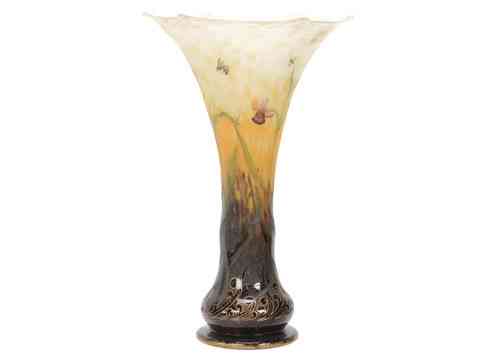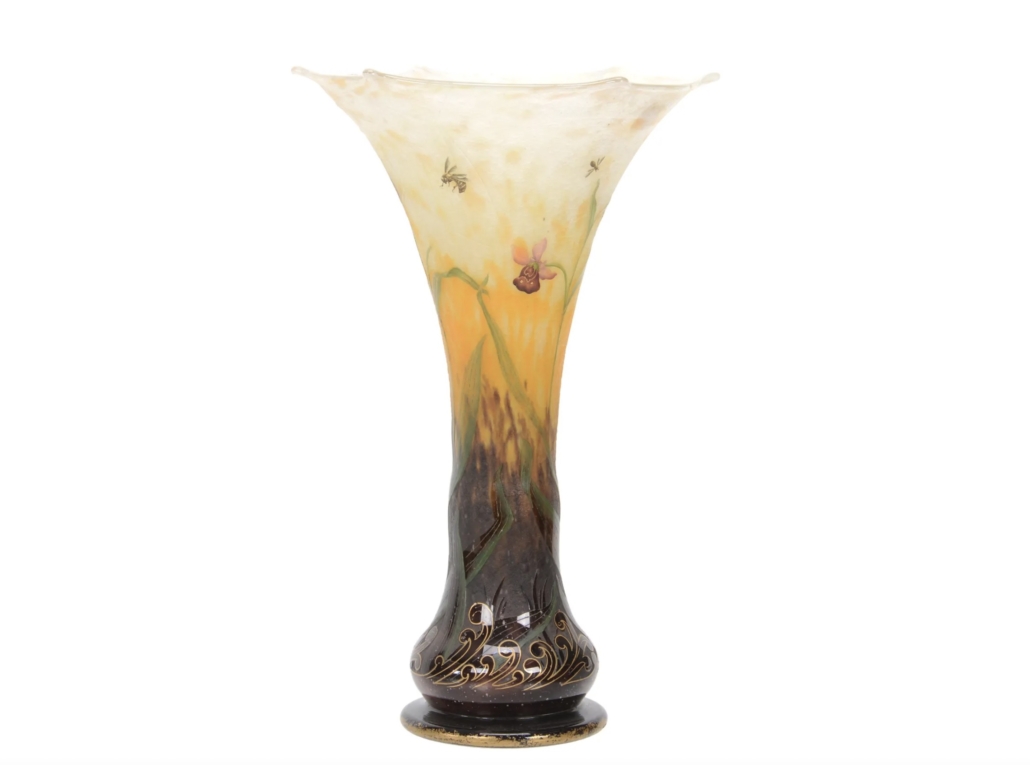
NEW YORK – Daum, a luxury art glass company founded in 1878 in Nancy, France, is famed for its eclectic range of innovative and delightful creations. While Daum reached the apex of its cultural influence during the Art Nouveau period, it has survived and flourished by pointedly refusing to rest on its beautifully gilded laurels.
In its early days, the company produced small numbers of hand-crafted enameled and acid-etched vases and bowls, as well as lamps featuring delicate, flowery free-flowing designs inspired by nature. Highly skilled Daum artists also used acid to alter underlay colors, polish or frost surfaces, and create multi-layered cameo glass designs featuring dark hues against bright, mottled grounds.

Additionally, wheel-turning techniques created rich surfaces that resembled the hammering seen on hand-worked silver – a seeming impossibility on vitrified glass that Daum nonetheless figured out how to realize and master. During the 1900 Paris Exhibition, the first international display of Art Nouveau design, Daum’s exhibit of lavish cameo glass and art glass lamps electrified crowds and judges alike.
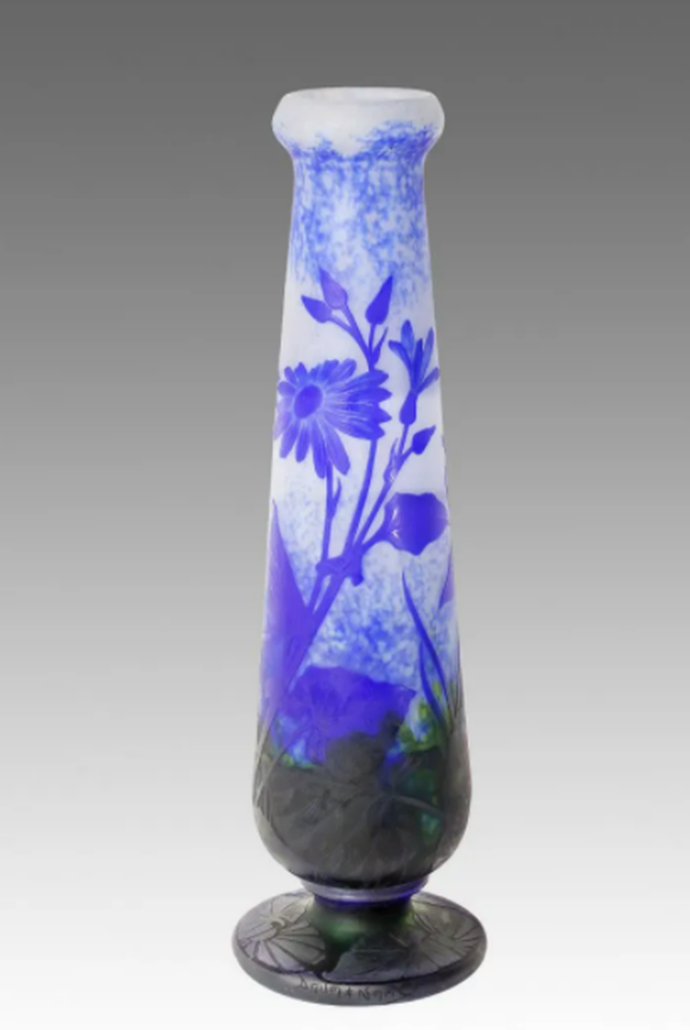
After World War One, Daum switched to mass-producing bold, fashionable Art Deco pieces. Many of their bubble, clear and single-color orange, blue, amber and green bowls and vases feature deep, acid-etched geometric patterns. Others are graced with decorative etched overlay or contrasting glass strips.
As this era drew to a close, Daum introduced an exceptionally high-quality crystal that blended glass and lead oxide. When chosen to produce glassware for the SS Normandie, a transatlantic ocean liner that doubled as an ambassador for French Art Deco style, the factory replaced all its traditional glass production with this prestigious material.
After World War Two, Daum reinvented itself again by producing clear, heavy 30% lead crystal figurines and blown glass vessels. Later, in 1968, the company reintroduced an extremely delicate cast glass process that its artists had discovered in the early 1900s: pate de verre. Yet the old-new, ceramic-like technique, which calls for melting sugar-like grains of fine lead glass crystal, then molding it with the lost wax casting process and firing it, apparently dates back further still, to 5,000 BCE Egypt.
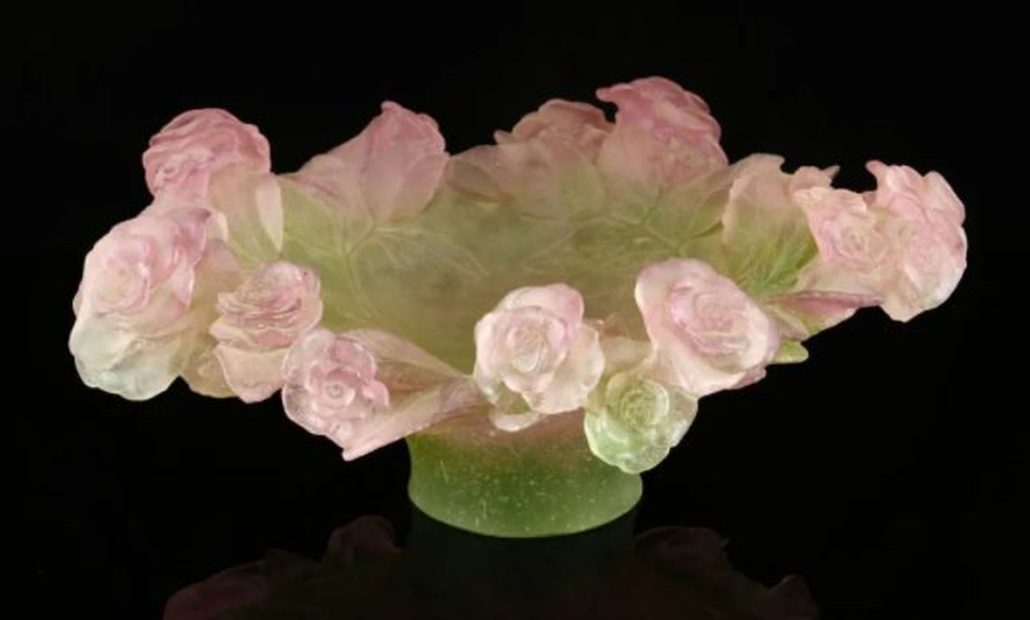
Because the pate de verre method gives crystal a sculptural dimension of soft textures, curves and curious contours that is unattainable in blown glass, it inspired countless new Daum designs. These not only mirrored the flowing qualities of classic creations but also achieved a singular, light-infused blend of brilliance, translucence and vibrant color – a combination of fragility and strength.
The inherent mutability of pate de verre inspired Daum glass artists and also fired the imaginations of master designers, sculptors and artists who the company invited to work with it. Roy Adzak, for example, created gauzy, sensuous feminine-themed paperweights, sculptures and nudes, while Jean-Philippe Richard created bright, alluring pate de verre female figurines.

Surrealist Salvador Dali, on the other hand, created marked, signed and numbered limited edition whimsies with Daum. The collaboration began in 1968 with the malevolent-looking Fleur du Mal (Wicked Flower) and continued with a cyber-yellow L’important C’est la Rose (The Rose is the Important Part) and a blue Venus Aux Tiroirs (Venus with Drawers) accented with applied silver-plate fragments on select areas of the goddess’s anatomy. But Dali’s graduated-green Debris d’une Automobile Donnant Naissance a un Cheval Aveugle Mordant un Telephone (Debris of an Automobile Giving Birth to a Blind Horse Biting a Phone), a frisky riff on his oil-on-canvas painting of the same name, might be the most fantastical of the series of limited editions.
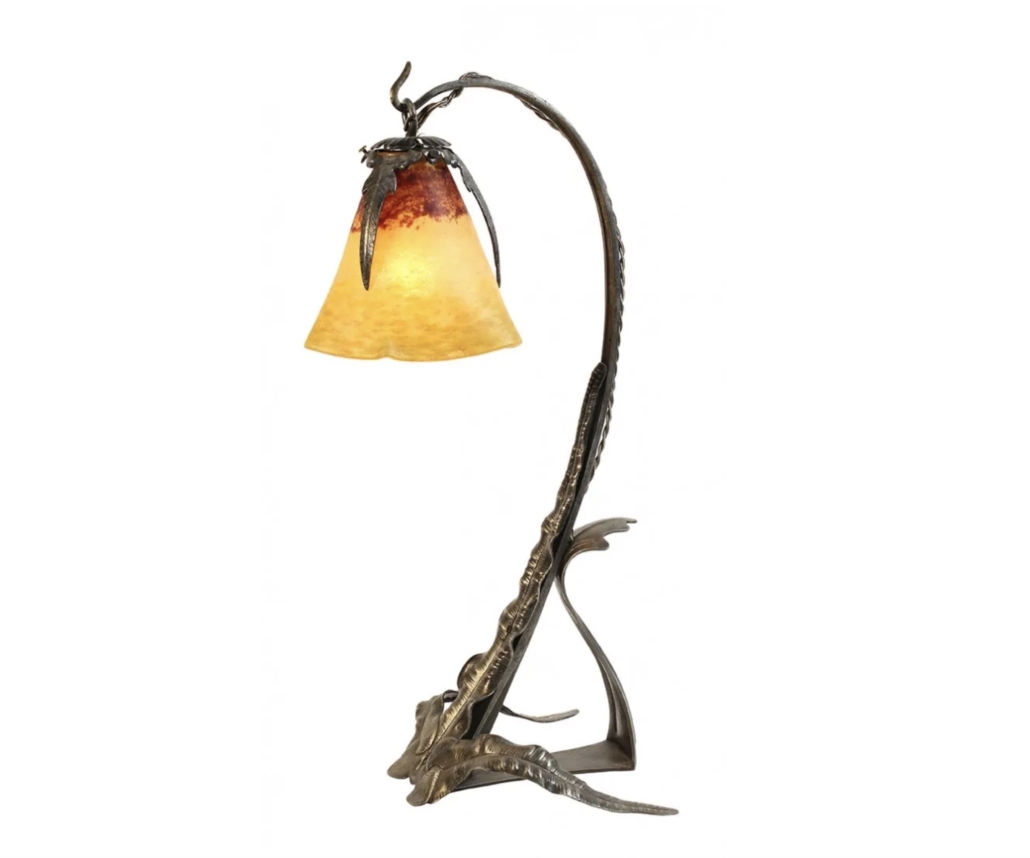
Daum/designer collaborations have a long history that reflects the company’s willingness to embrace outside ideas in the interest of staying fashionable and fresh. Throughout the 1920s, Louis Majorelle, a noted French interior decorator and furniture designer, created chandeliers, table lamps and floor lamps for Daum, as well as vases and gold-infused glass bowls wrapped in wrought iron frames. Art Deco designer Edgar Brandt, in addition to dreaming up designs for table lamps, chandeliers, and cameo glass wall scones, created striking bronze, cobra-shaped floor lamp bases coiled around Daum mottled glass shades.
During the course of more than 140 years, Daum has collaborated with at least 350 artists and designers. Thanks to its glass mastery, extensive research and innovation, it has produced a steady stream of unique masterpieces that are beyond compare.


